Are you considering keeping a wild frog as a pet? While it may seem like a fun and unique idea, there are several important factors to consider before making this decision. First and foremost, it is important to understand the legality of keeping a wild frog as a pet in your area. In some cases, it may be illegal to capture and keep wild animals as pets.
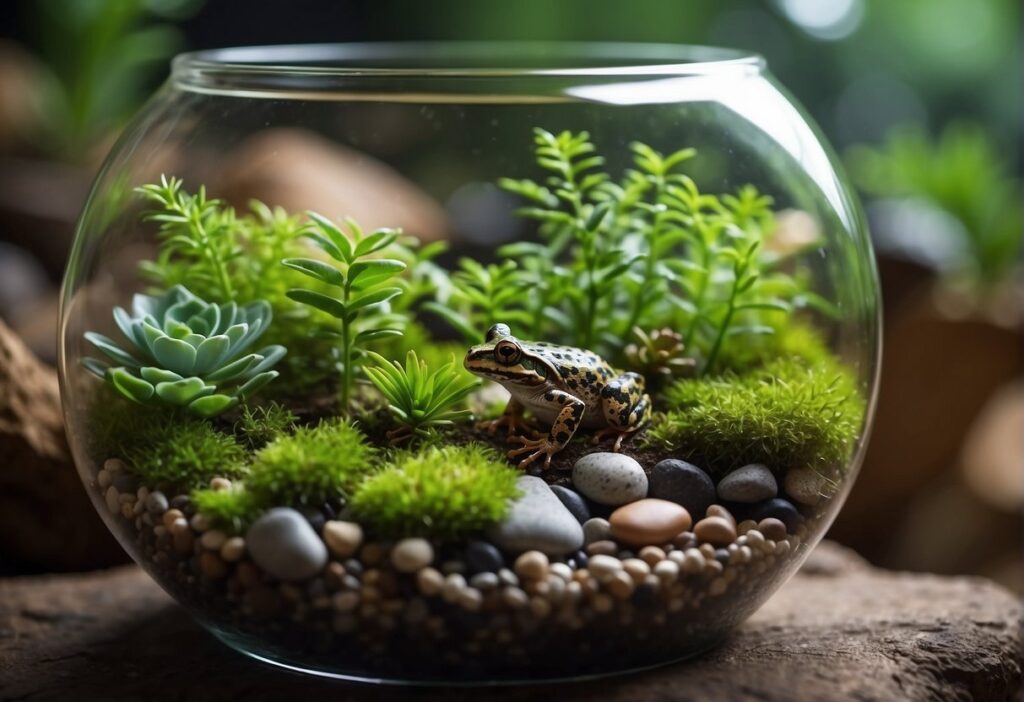
Even if it is legal, there are other important considerations to keep in mind. Wild frogs can carry diseases such as salmonella and other harmful pathogens. Additionally, some species of frogs are highly poisonous and can be dangerous to handle. Before deciding to keep a wild frog as a pet, it is important to do your research and understand the risks and responsibilities involved.
Key Takeaways
- Keeping a wild frog as a pet may be illegal in some areas.
- Wild frogs can carry diseases and some species are highly poisonous.
- It is important to do your research and understand the risks before deciding to keep a wild frog as a pet.
Legal Considerations
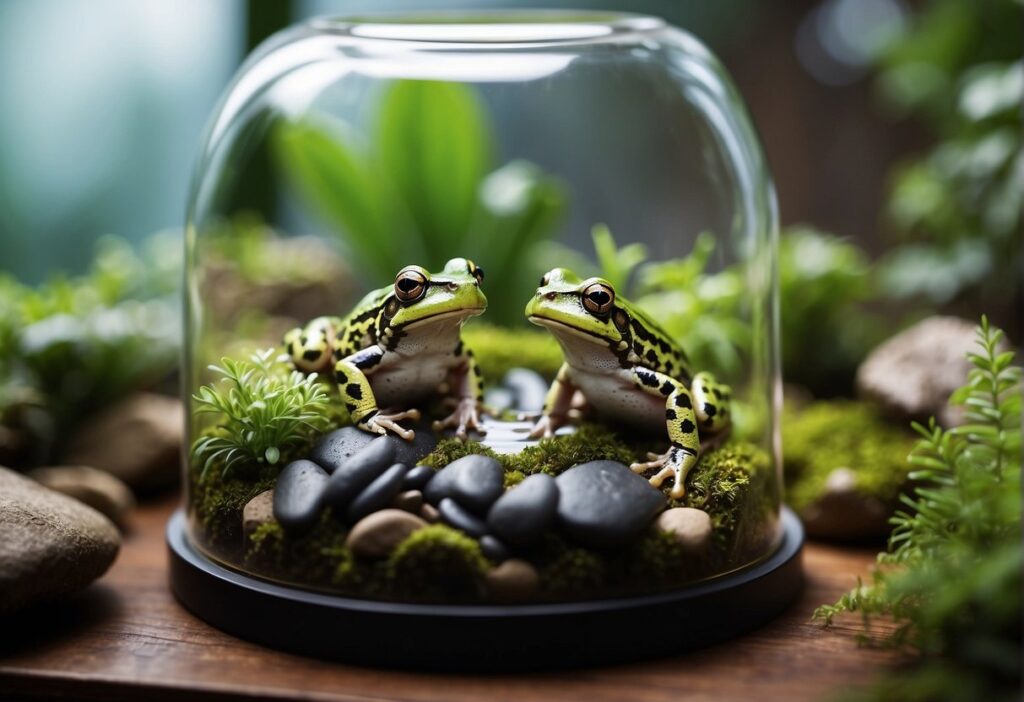
If you are considering keeping a wild frog as a pet, it is important to understand the legal considerations involved. This section will outline some key points to keep in mind when considering the legality of keeping wild frogs as pets.
Understanding Local Laws
Before acquiring a wild frog as a pet, it is important to research the laws in your area. Some states prohibit the capture and keeping of wild animals without a permit, while others may have specific regulations regarding the types of animals that can be kept as pets. It is important to understand the laws in your area to avoid any legal issues.
Endangered Species and Conservation
It is also important to consider the impact that keeping wild frogs as pets can have on populations and conservation efforts. Many species of frogs are currently facing population declines and are listed as endangered or threatened. Capturing and keeping these animals as pets can further contribute to their decline and potentially lead to extinction. It is important to consider the ethical implications of keeping wild animals as pets and to prioritize conservation efforts.
Choosing the Right Frog

When it comes to choosing the right frog to keep as a pet, there are several factors to consider. In this section, we will take a closer look at some of the most important things to keep in mind when selecting a species of frog to bring into your home.
Species Overview
There are many different species of frogs that can be kept as pets, each with its own unique characteristics and care requirements. Some popular options include tree frogs, African dwarf frogs, green tree frogs, pacman frogs, tomato frogs, and Oriental fire-bellied toads.
Before selecting a species of frog to keep as a pet, it is important to do your research to ensure that you are able to provide the proper care and environment for the animal. Be sure to consider factors such as size, lifespan, and behavior when making your decision.
Size and Lifespan
Frogs vary greatly in size and lifespan, so it is important to choose a species that is appropriate for your living space and lifestyle. African dwarf frogs, for example, are relatively small and have a lifespan of around five years, making them a good option for those who are short on space or looking for a lower-maintenance pet.
On the other hand, species like the green tree frog can grow up to four inches in length and have a lifespan of up to 10 years, so they may be a better choice for those who are looking for a larger, longer-lived pet.
Behavior and Temperament
Different species of frogs also have different behavior and temperament, so it is important to choose a species that is compatible with your personality and lifestyle. Some species, such as the Oriental fire-bellied toad, are relatively docile and easy to handle, while others, like the pacman frog, can be more aggressive and require a bit more care and attention.
Creating a Suitable Habitat

When it comes to keeping wild frogs as pets, providing a suitable habitat is essential for their health and well-being. Here are some important considerations to keep in mind when creating a habitat for your pet frog.
Tank Setup and Size
The first thing you need to consider is the size and type of tank you will use. Frogs need plenty of space to move around and explore, so you will need to choose a tank that is large enough to accommodate their needs. A good rule of thumb is to provide at least 10 gallons of space per frog.
In addition to size, you will also need to consider the type of tank you will use. Glass terrariums are a popular choice, as they provide a clear view of your frog and are easy to clean. However, plastic tubs or aquariums can also work well, as long as they are large enough and provide adequate ventilation.
Substrate and Decor
The substrate you choose for your frog’s tank is also important. Frogs need a substrate that is moist and provides good drainage, as well as plenty of hiding places. Moss, coconut coir, and soil are all good options.
In addition to substrate, you will also need to provide plenty of decor and hiding places for your frog. Live plants, branches, and wood can all provide great hiding places and enrichment for your pet. Just make sure any plants you choose are non-toxic and safe for your frog to eat.
Temperature and Humidity Control
Finally, you will need to consider temperature and humidity control in your frog’s tank. Frogs are ectothermic, which means they rely on their environment to regulate their body temperature. A temperature range of 70-80 degrees Fahrenheit is ideal for most species of frogs.
In addition to temperature, you will also need to maintain proper humidity levels in your frog’s tank. Most species of frogs require a humidity level of 50-80%. You can maintain humidity by misting the tank regularly or using a substrate that retains moisture.
Frog Health and Care
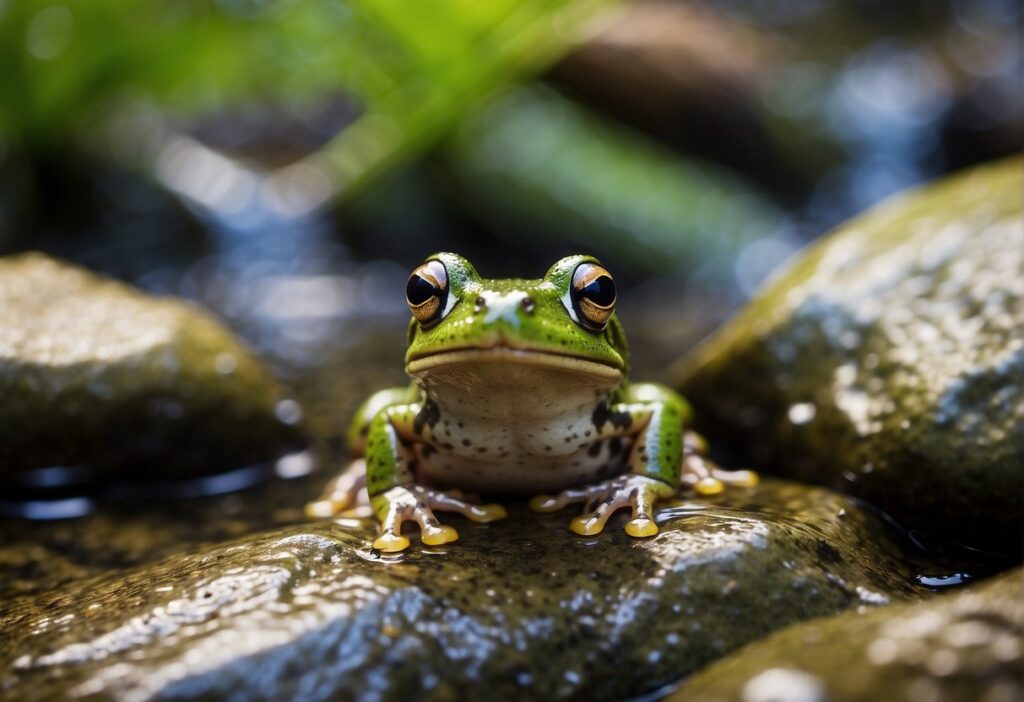
Diet and Feeding
When it comes to feeding wild frogs, it is important to understand their specific needs. Different species of frogs have different dietary requirements, so it is important to research and understand the specific needs of the species you are keeping. Some species may require a diet of insects, such as crickets, while others may require a more diverse diet that includes plants and other small animals.
When feeding your pet frog, it is important to provide a varied diet that includes a mix of protein and vegetables. Make sure to feed your frog live insects, as they are more likely to be accepted by your pet. Additionally, it is important to avoid overfeeding your frog, as this can lead to obesity and other health issues.
Handling and Interaction
While it may be tempting to handle your pet frog, it is important to remember that wild frogs are not accustomed to human contact. Handling your frog too much can cause stress and may even lead to injury. If you do need to handle your frog, make sure to do so gently and with care. Avoid touching your frog’s skin, as this can cause irritation and may even lead to disease.
Common Health Issues
Wild frogs are susceptible to a number of health issues, including salmonella, parasites, and fungal infections. To keep your pet frog healthy, it is important to provide a clean and well-maintained environment. Make sure to clean your frog’s enclosure regularly and avoid overcrowding. Additionally, it is important to monitor your frog’s behavior and appearance for signs of illness. If you notice any changes in your frog’s behavior or appearance, it is important to seek veterinary care immediately.
Acquiring Your Frog
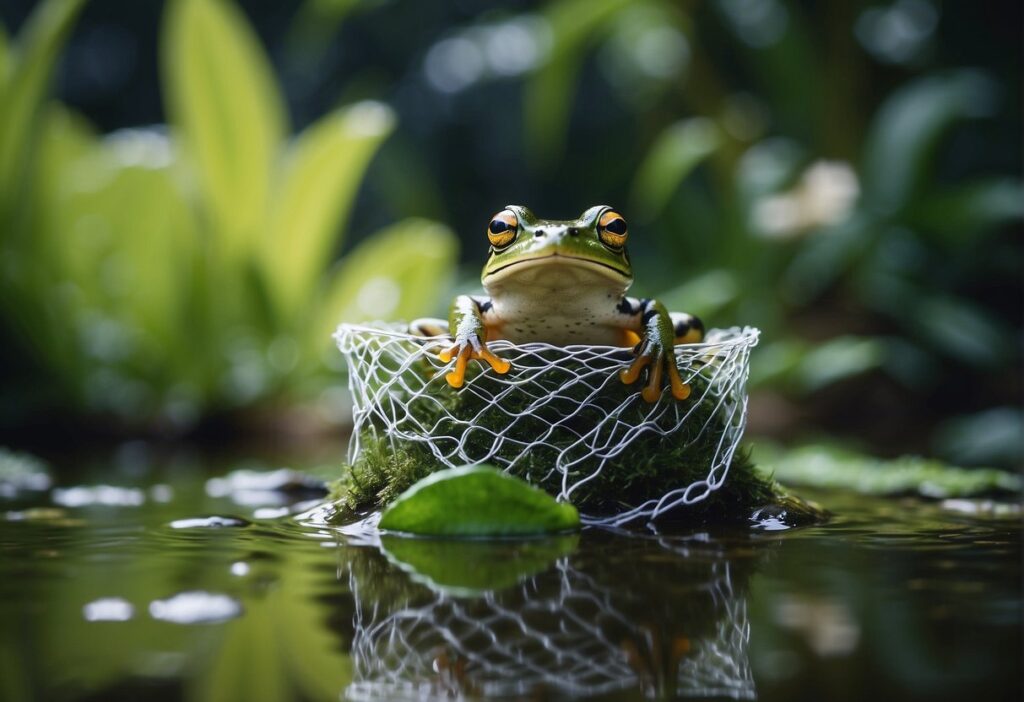
If you’re considering getting a wild frog as a pet, there are a few things you need to keep in mind when acquiring one. Here are some important factors to consider:
Purchasing from Breeders
While it is not recommended to keep wild frogs as pets, if you do decide to get a frog, it’s best to purchase one from a reputable breeder. Breeders will have captive-bred frogs that are healthier and less likely to carry diseases or parasites than wild-caught frogs. They can also provide information on the specific care needs of the species you’re interested in.
Cost Considerations
The cost of a frog can vary depending on the species and where you purchase it from. Captive-bred frogs tend to be more expensive than wild-caught frogs, but they are generally healthier and easier to care for. You will also need to factor in the cost of setting up an appropriate habitat for your frog, which can include a tank, substrate, lighting, and heating.
Captive-Bred vs. Wild-Caught
As mentioned earlier, captive-bred frogs are generally healthier and easier to care for than wild-caught frogs. Wild-caught frogs can carry diseases and parasites that can be harmful to both the frog and its owner. Additionally, many species of wild frogs are protected by law and cannot be kept as pets without a permit.
Maintenance and Upkeep
Keeping wild frogs as pets requires proper maintenance and upkeep. In this section, we will discuss the cleaning and water quality, as well as lighting and equipment needed to maintain a healthy and happy ecosystem for your pet frog.
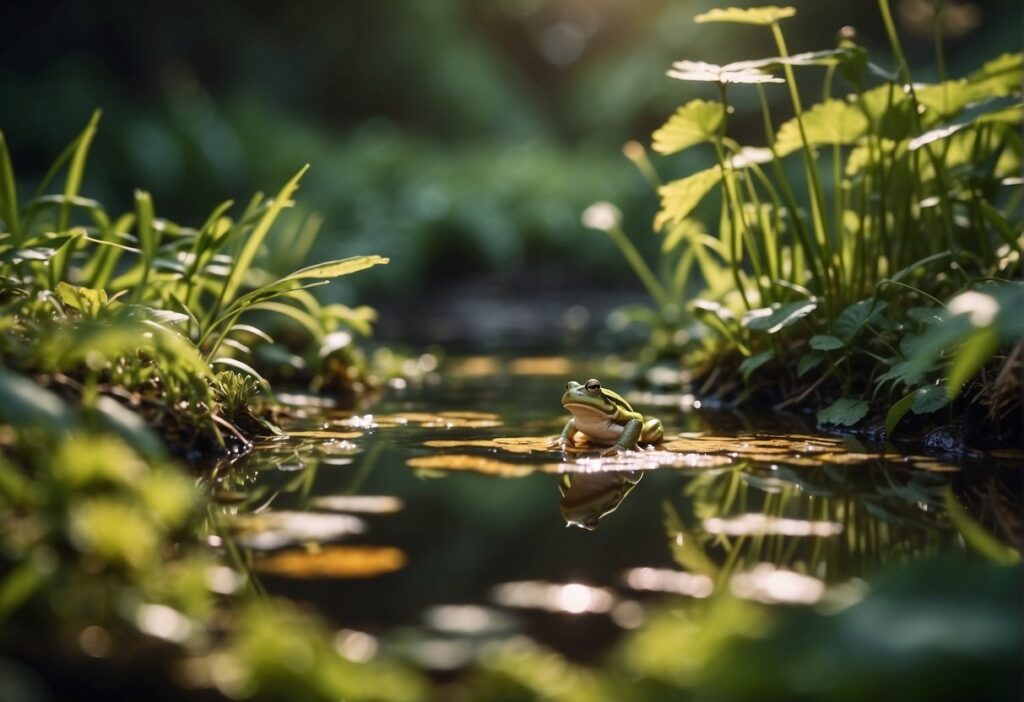
Cleaning and Water Quality
Cleaning is an essential part of keeping a wild frog as a pet. You should clean the aquarium regularly to ensure that your pet frog is living in a clean and healthy environment. To clean the aquarium, you should remove any debris or uneaten food from the bottom of the tank and replace the water with fresh, dechlorinated water.
Water quality is also critical for your pet frog’s health. You should test the water regularly to ensure that it meets the appropriate pH and calcium levels. You can use a hygrometer to measure the humidity levels in the tank and ensure that they are at the appropriate level for your pet frog’s species.
Lighting and Equipment
Lighting is essential for your pet frog’s health. You should provide your pet frog with a UVB light to ensure that they receive the necessary vitamin D3. You should also provide a heat lamp to keep the temperature of the tank at the appropriate level for your pet frog’s species.
Equipment such as a filter and heater are also necessary to maintain the appropriate temperature and water quality in the tank. A filter will help keep the water clean, and a heater will ensure that the water temperature remains constant.
Ethical Considerations
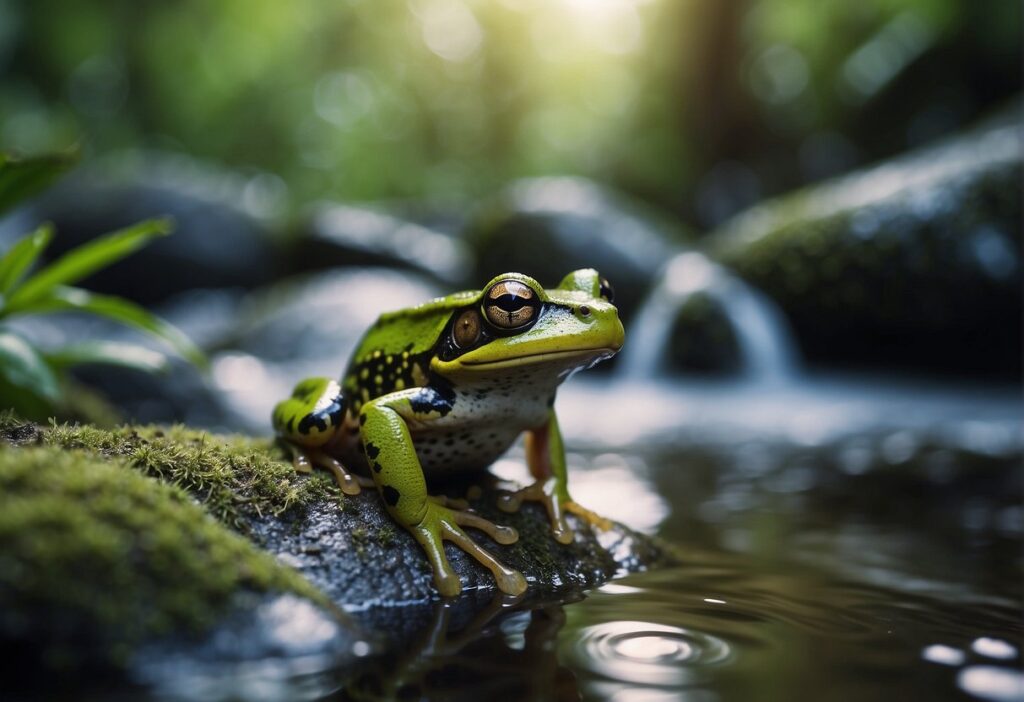
When it comes to keeping wild frogs as pets, there are several ethical considerations that you need to keep in mind. In this section, we will explore two important aspects of these considerations: responsibility and commitment, and the impact on wild populations.
Responsibility and Commitment
Keeping a wild frog as a pet is a serious responsibility that requires a significant level of commitment. You need to be prepared to provide your pet frog with everything it needs to thrive in captivity, including proper nutrition, a suitable living environment, and regular veterinary care.
It’s important to remember that wild frogs are not domesticated animals, and they may not be accustomed to living in captivity. As a result, they may require more attention and care than other types of pets. You should be prepared to spend time with your pet frog every day, monitoring its health and behavior, and providing it with the care and attention it needs to stay healthy and happy.
Impact on Wild Populations
Another important ethical consideration when it comes to keeping wild frogs as pets is the impact on wild populations. Capturing and removing a wild frog from its natural habitat can disrupt the delicate balance of the environment. Additionally, wild frogs may carry diseases or parasites that can be harmful to humans and other pets.
It is essential to consider these ethical implications before deciding to keep a wild frog as a pet. If you are determined to keep a frog as a pet, it is important to ensure that you obtain it from a reputable source, such as a breeder or pet store, rather than capturing it from the wild.
Furthermore, it is important to note that many frog species are experiencing population declines, and some are even at risk of extinction. Keeping these species as pets can contribute to these declines, and may not be the best way to support conservation efforts. Instead, consider supporting conservation organizations that work to protect these species and their habitats.
Frequently Asked Questions
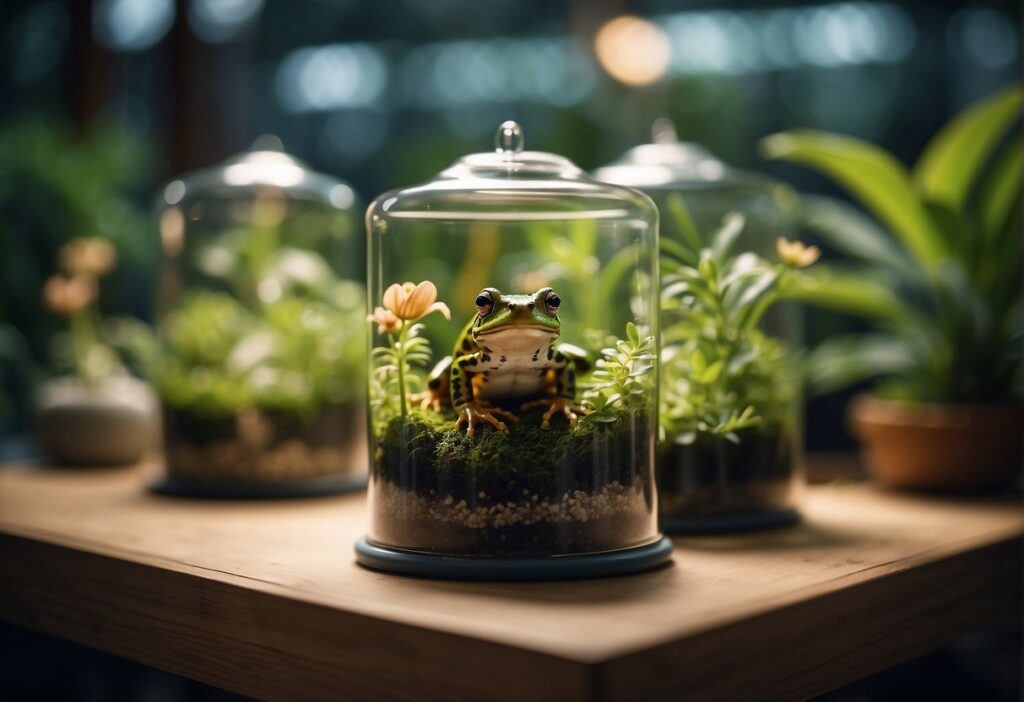
What are the requirements for creating a suitable habitat for a pet frog?
When creating a suitable habitat for your pet frog, it’s important to consider the species of frog you have. Different species have different habitat requirements. Generally, frogs need a terrarium with adequate space, proper lighting, temperature, and humidity levels. They also need a substrate, such as soil or moss, to burrow in and hide. Additionally, you’ll need to provide hiding spots, plants, and water features to mimic their natural environment.
What should I feed a frog that I’ve caught in the wild?
It’s not recommended to keep wild frogs as pets. However, if you do, it’s important to provide them with a proper diet. Wild frogs typically eat insects, such as crickets, flies, and mealworms. You can also offer them small pieces of fruit or vegetables. It’s important to avoid feeding them insects that have been exposed to pesticides or other chemicals.
How do I properly care for a wild frog in captivity?
Caring for a wild frog in captivity can be challenging. It’s important to provide them with a suitable habitat, proper diet, and regular veterinary care. You should also avoid handling them too much as this can cause stress and harm to the frog. It’s important to research the specific needs of the species of frog you have and provide them with the appropriate care.
Are there any legal issues with keeping a wild frog as a pet?
In many areas, it’s illegal to keep wild frogs as pets. It’s important to check with your local wildlife agency or department of natural resources to determine if it’s legal to keep wild frogs as pets in your area. Additionally, some species of frogs are protected and cannot be kept as pets.
What are the ethical considerations of having a wild frog as a pet?
Keeping wild frogs as pets raises ethical concerns. Wild frogs are meant to live in their natural habitats and removing them can disrupt the ecosystem. Additionally, wild frogs may not adapt well to captivity and can suffer from stress and other health issues. It’s important to consider these ethical concerns before deciding to keep a wild frog as a pet.
Can wild frogs be safely handled by their owners?
Handling wild frogs can be dangerous for both the frog and the owner. Wild frogs may carry diseases or parasites that can be harmful to humans. Additionally, handling can cause stress and harm to the frog. It’s important to avoid handling wild frogs and to provide them with a suitable habitat where they can live comfortably without human interference.

